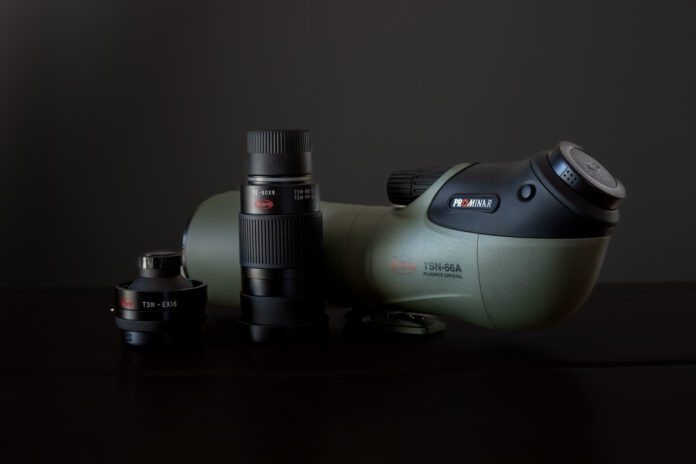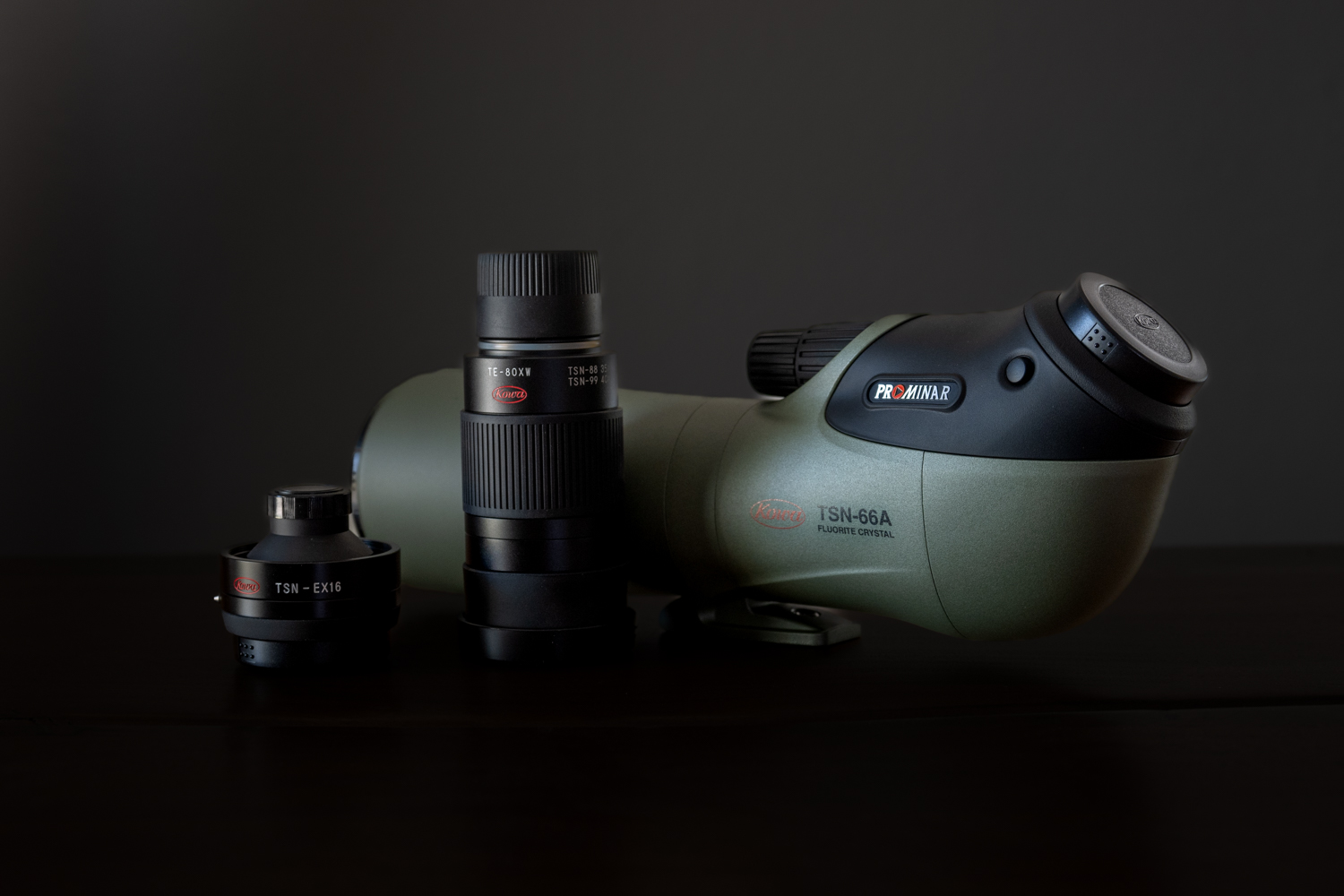
Over a decade ago, I was introduced to Kowa (properly pronounced KOH-uh) Optics of Japan. Kowa wasn’t new to optics. Like many hunters, I was just new to Kowa. Birders the world over had held Kowa in the highest regards for decades. In fact, Kowa’s roots were set way back in 1894 as the Hattori Kanesaburo Wholesale Store selling wholesale cotton fabric. Hattori started making optical equipment in 1946 before changing the name to Kowa Company, Ltd. in 1954. The first spotting scope was produced in 1952 for competitive shooters. Since then, Kowa has produced improving models consistently for over 70 years.
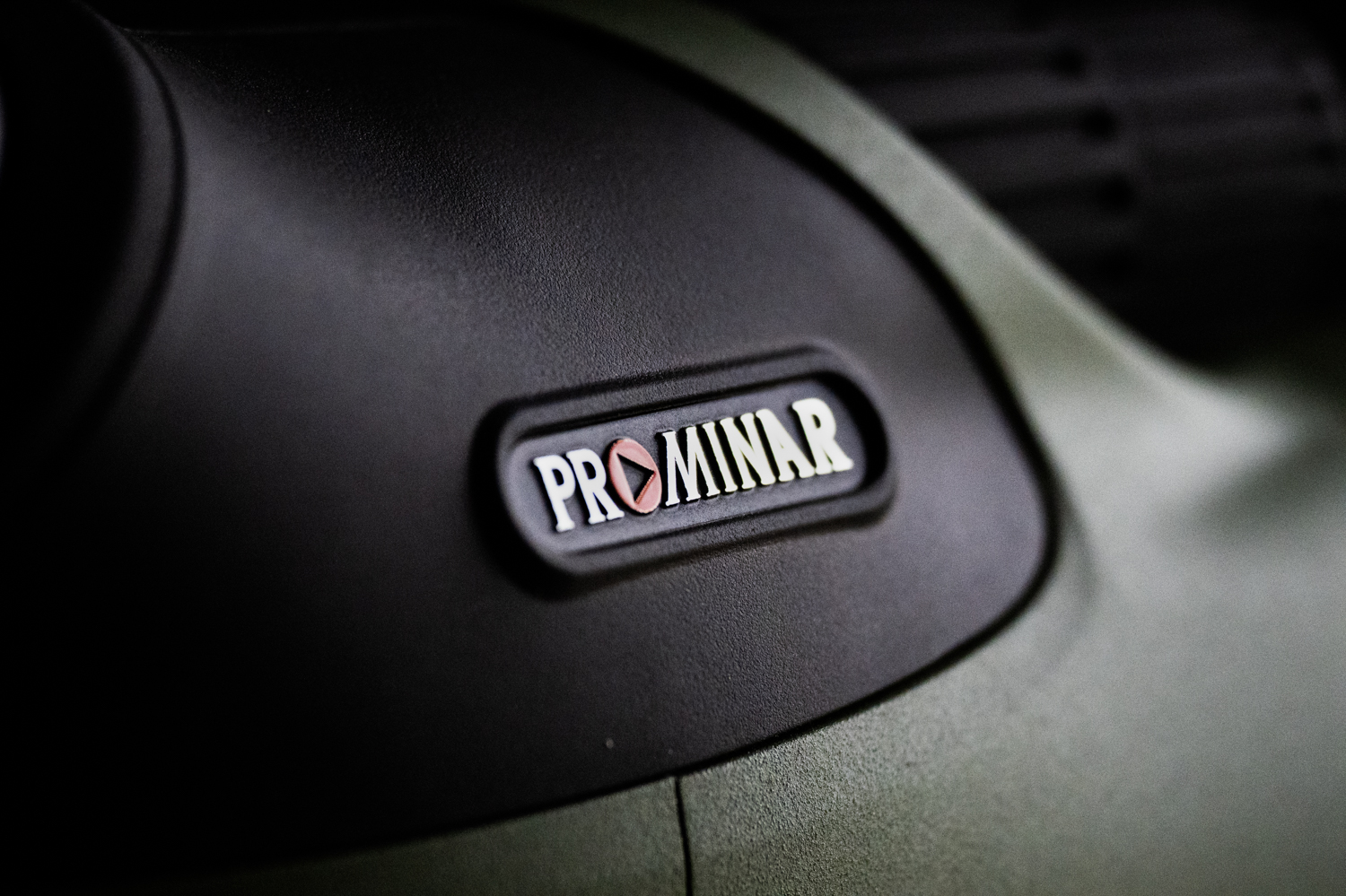
Kowa Prominar 66A
The Kowa spotting scope lineup consists of a standard line and the “Prominar” line. Prominar models are the pinnacle of Kowa’s performance and technology. Many hunters became familiar with Kowa due to their subcompact 55mm Prominar spotting scope. At its introduction, it was the only sub compact spotting scope on the market with truly premium optical performance. Many a backpack hunter fell in love with it. That love affair spilled over to the full size Prominar spotters with western hunters of all types picking their favorite of the 77mm, 88mm, and more recently 99mm spotting scopes. See the entire lineup here.
The new 66mm model replaces the well-regarded 77mm scope in the lineup. The 77mm scope was the only Prominar scope without a fluorite crystal lens, so now the entire Prominar lineup is fluorite-equipped.
What is Fluorite Crystal and What Does it Do?
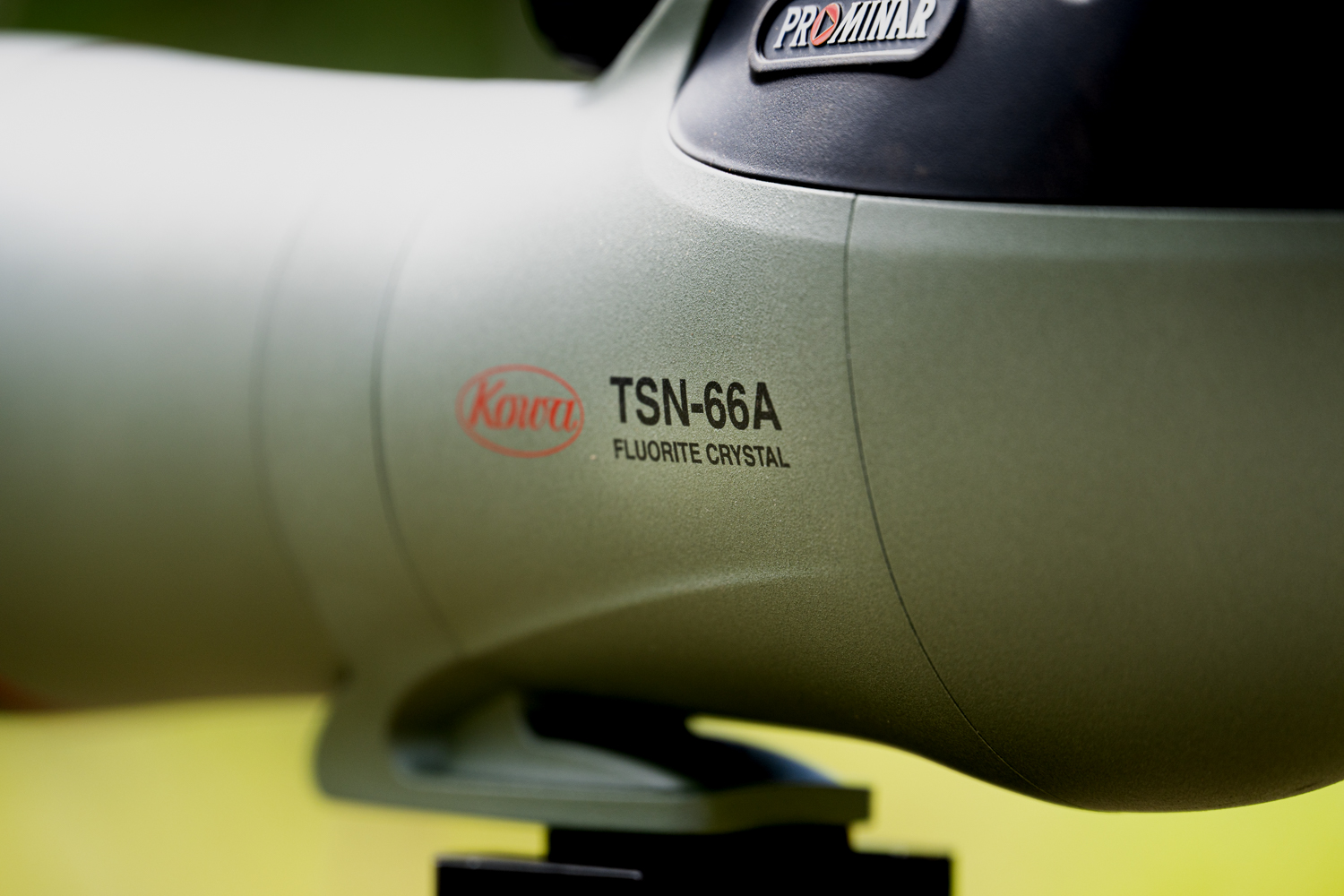
One of the main enemies of high-magnification sport optics is color fringing from chromatic aberration. Chromatic aberration is the phenomenon where light waves “disperse” when passing through a glass lens. Think of the rainbow of colors that comes through a glass prism. This effect happens with sport optics and is visible as fringes of cyan and magenta around high contrast edges in the image.
Optics engineers learned they could add certain minerals to optical glass to reduce this dispersion. The improvement was dramatic and companies immediately marketed the technology under a number of names like APO (apochromatic), ED (extra-low dispersion), HD (high definition), and FL (fluorite glass).
Kowa figured if adding fluorite to optical glass was good, wouldn’t making an entire lens from mineral fluorite be better? Kowa began growing their own fluorite crystals in their own facility. Then they shaped and polished the crystal into perfect optical lenses and the results were … well … amazing. In my experience, spotting scopes incorporating a fluorite crystal element are unparalleled in suppressing color fringing from chromatic aberration.
Why a 66mm Spotter?
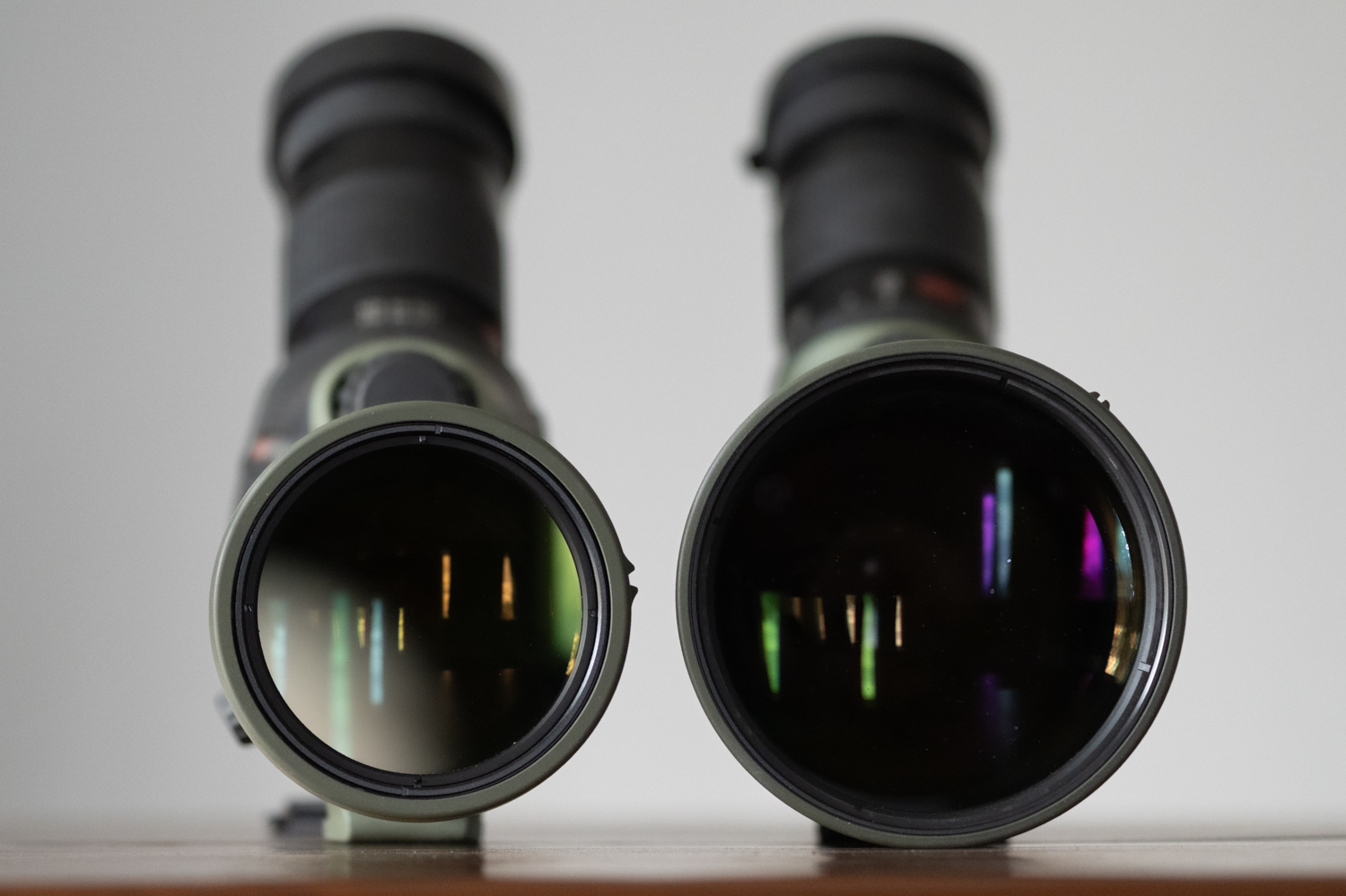
I have been using the Prominar 88mm spotting scope as my primary full-size spotting scope for the last few seasons. Combined with the TE-11WZ 25-60 Wide Angle eyepiece, the Prominar 88 provides class-leading optical performance. The only downside is all that performance comes at a size and weight penalty. The Prominar 88 with eyepiece weighs in at 4 lbs. 3.85 ounces. It’s not bad for the truck, range, and horseback hunts but still chunky for a backpack optic. The Prominar 66A shaves off over 13 ounces versus the Prominar 883. That’s substantial weight savings.
I have owned several 65mm class spotters over the years and appreciated their “Goldilocks” status as both a full-size spotter for general use and compact spotter for backpacking. The announcement of the new Prominar 66A was really interesting. I was encouraged to note it accepted the eyepieces compatible with the larger Prominar scopes. The questions emerged:
- How does the new Prominar 66A stack up to the benchmark Kowa Prominar 88mm spotter?
- How does the Prominar 66A perform compared to some of the European competition?
I just needed to get them all together and see how they stack up.
Eyepieces
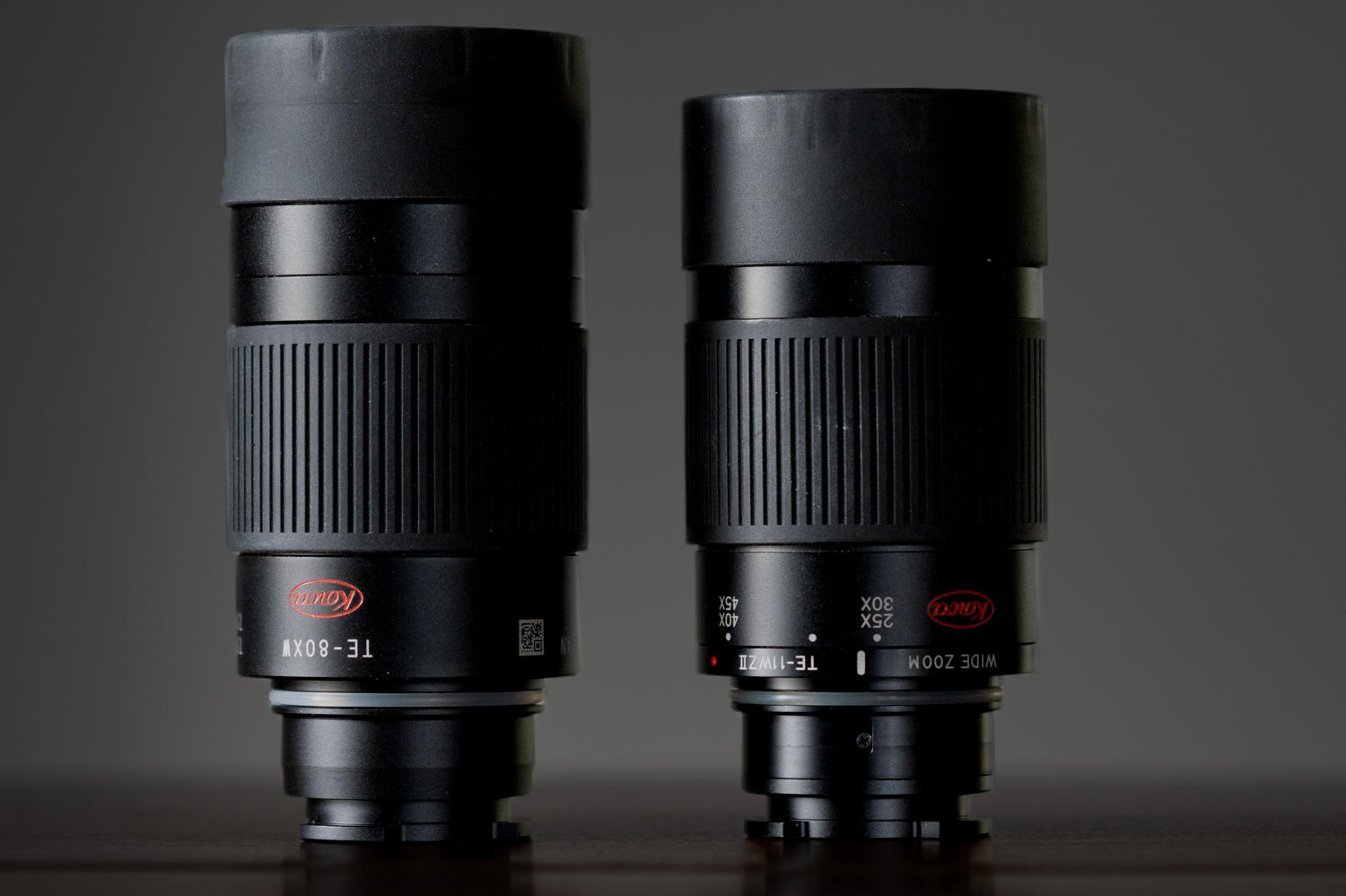
There is little doubt that Kowa’s growing reputation with serious hunters has much to do with their excellent eyepieces. Setting aside the 55mm’s smaller zoom eyepiece, the rest of the Prominar range shares a bayonet mount and accepts Kowa’s top of the line eyepieces.
- The TE-11WZ II Prominar Eyepiece. This eyepiece was Kowa’s first to get the “Prominar” label. Interestingly, the design incorporates “XD” low dispersion glass elements in the eyepiece. The zoom provides 25-60x magnification on the 66 and 88 spotters or 30-70x magnification on the 99.
- The TE-80XW Extreme Wide Eyepiece. This ultra wide angle eyepiece is a little longer and 4 ounces heavier than the zoom. It provides a fixed 35x magnification on the 66/88 and 40x on the 99. More on this eyepiece later.
Accessories
Kowa has a full-discoping line of accessories for connecting anything from phones to interchangeable lens cameras to the scopes. There is also an extender (magnification booster) available that multiplies the magnification by 1.6x. Kowa sent a copy of the extender for me to try as part of this evaluation.
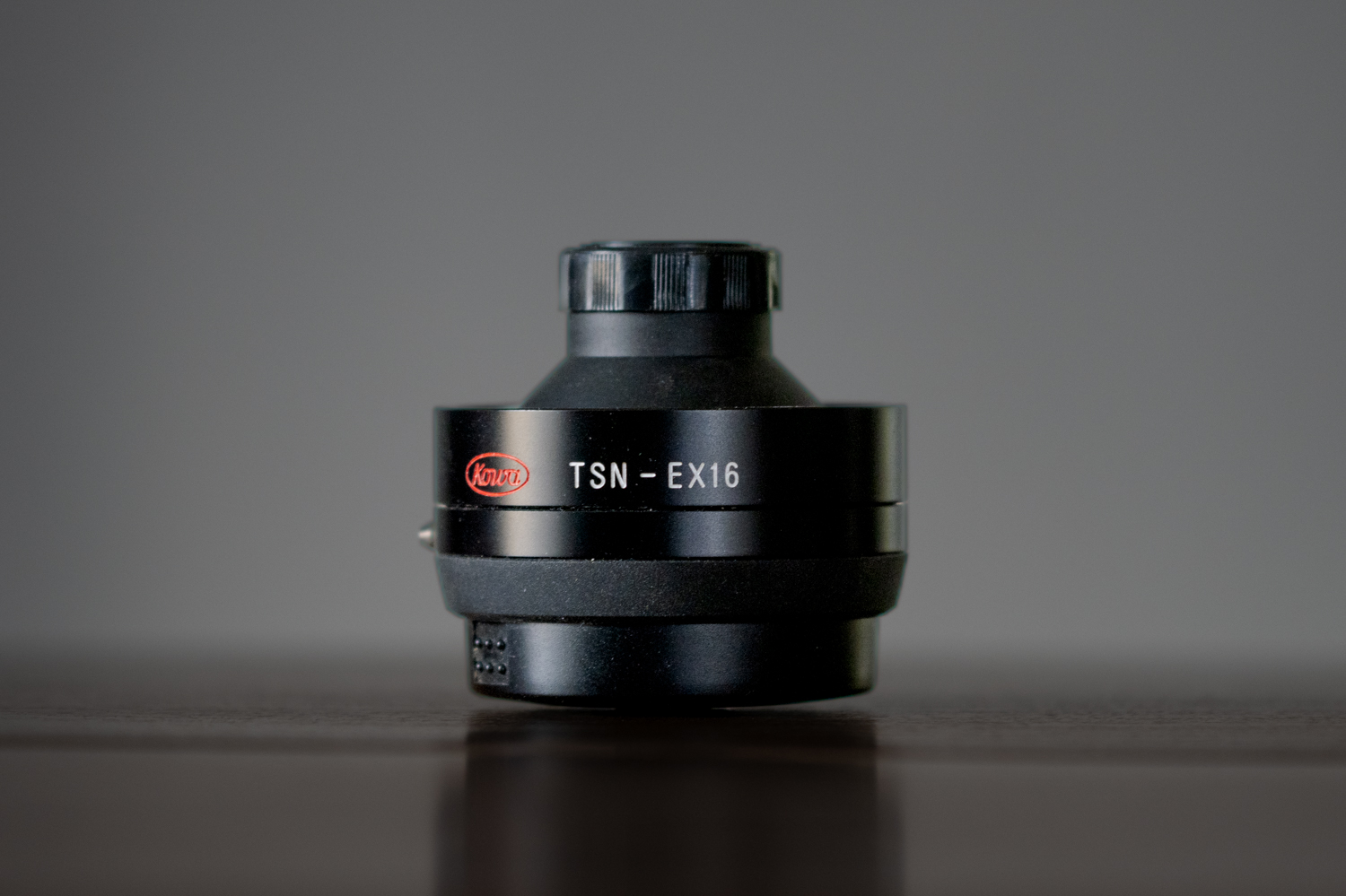
Testing
I was able to put the Prominar 66A up against some capable competition. Besides my trusty Kowa Prominar 883, I had the tried and proven Swarovski ATS 65 and ATX 65 models to provide some Austrian flavor to the evaluation. Resolution testing included putting a close range resolution chart at 30 yards and a printed eye chart at approximately 520 yards in field conditions. Testing was done both in good daylight and last light of the day.
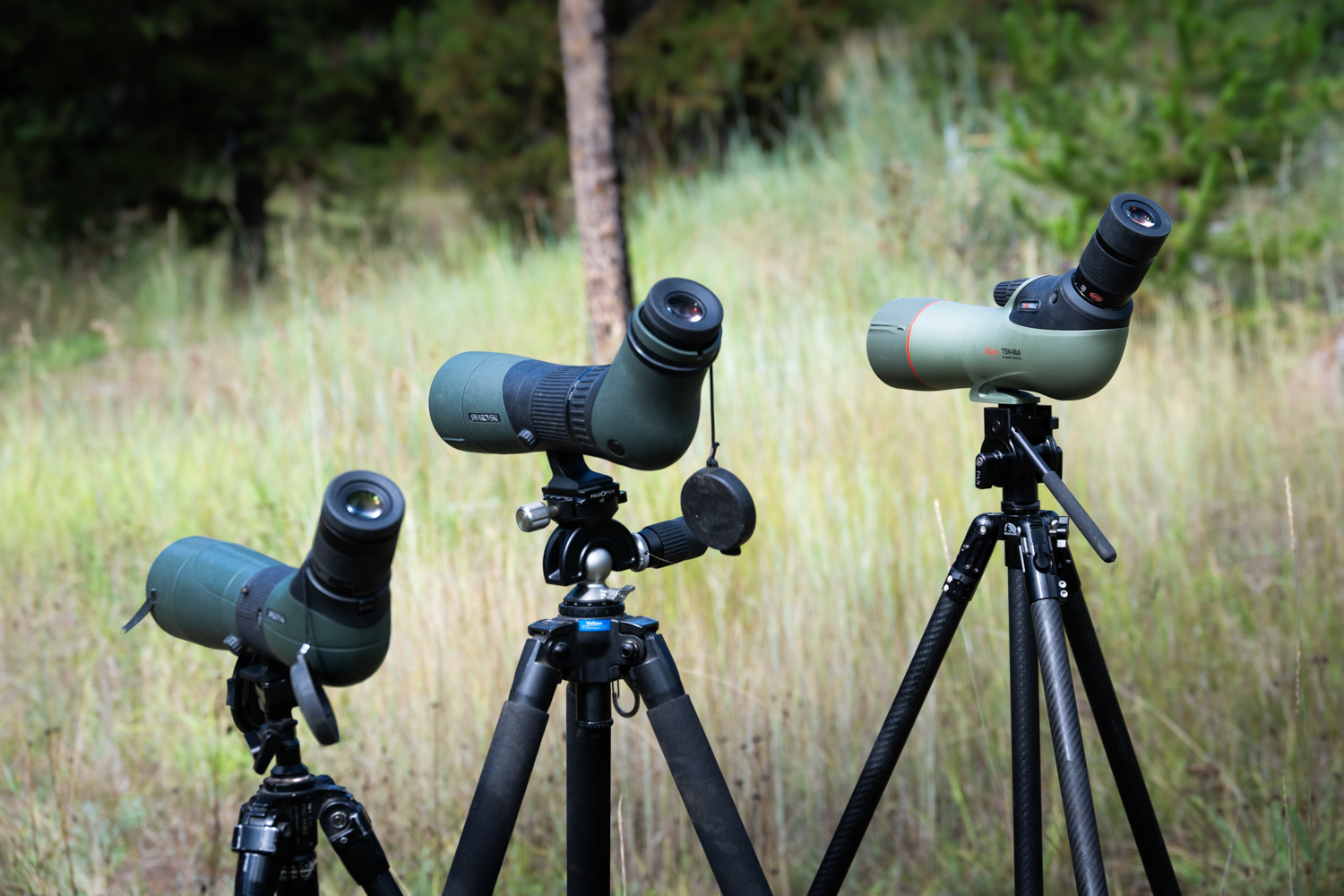
Field testing included scouting for mule deer, bowhunting for mule deer, and a very glassing-intensive mountain goat hunt in Montana.
Build Quality
After testing the Prominar 883 next to the ATX 85 over a decade ago, one of my main criticisms of the Kowa was the lack of rubber armoring. I don’t like using cases for spotting scopes and appreciate the built-in protection of rubber armor. Armor also provides more comfortable contact for chilly fingers in cold conditions versus the frosted touch of painted metal.
Kowa recently redesigned the exterior of the 883 into the new 88A. The optics didn’t change, but they did add a little rubber armoring by the eyepiece and focus knobs, similar to the 99A at introduction. The 66A follows suit. I appreciate the touch of armor but would prefer Kowa just come out with a full rubber armored version. The new scopes also have two 1/4-20 threaded locations on the foot to help find the ideal balance on a tripod.
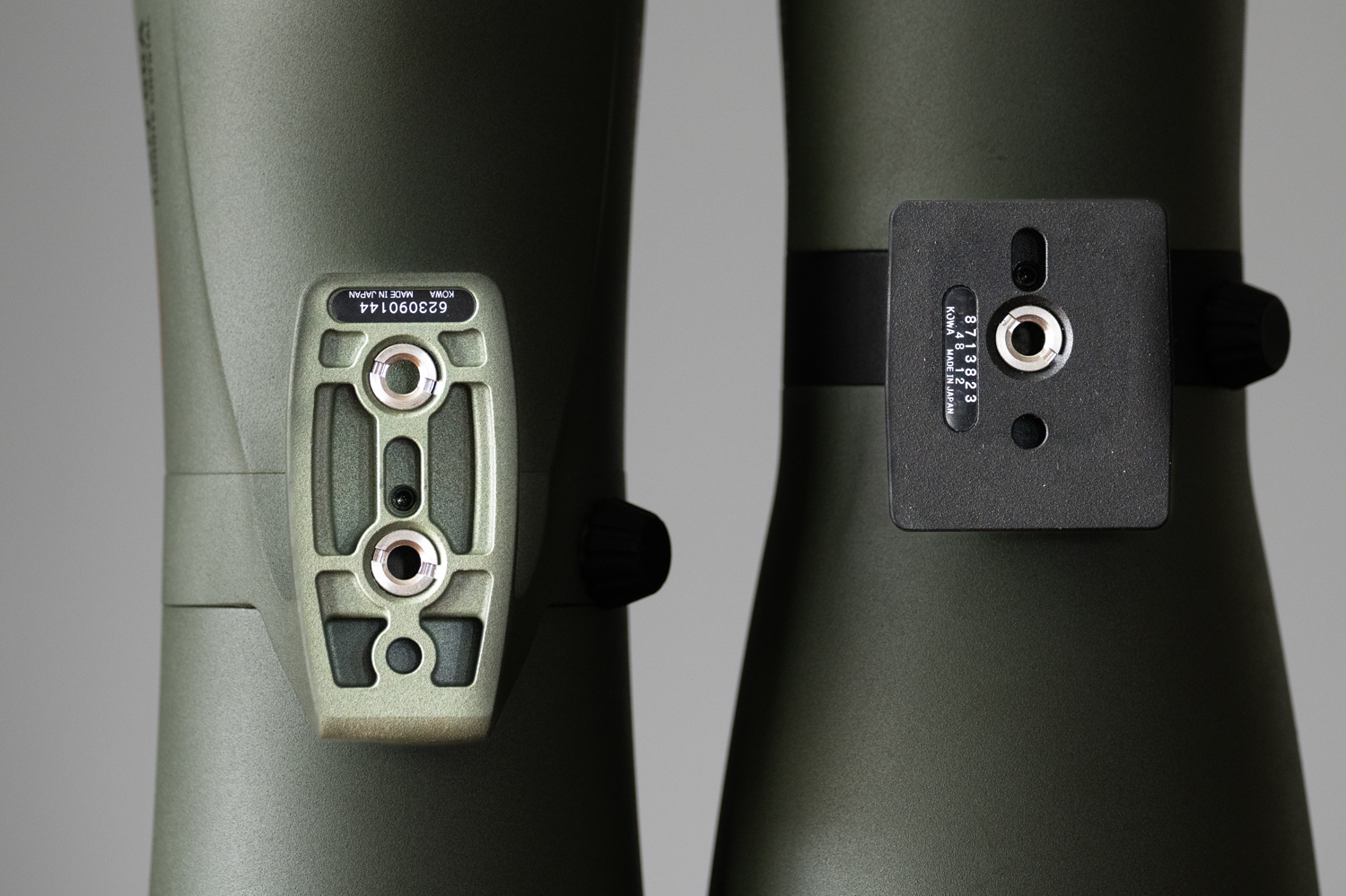
Other than the lack of armor, it is really difficult to find fault with the Kowa build quality. It is clear that Kowa’s own factory in Japan has skilled technicians who know how to put together a precision optic. Everything fits perfectly. Every knob is smooth and damped. The eyepieces mount and dismount with a satisfying click or thunk. The exterior finish may not be rubber armor, but the durable paint finish is applied perfectly.
The eyepieces have an o-ring gasket that seals tightly to the body. The dual focus knob offers both fast and precise adjustment.
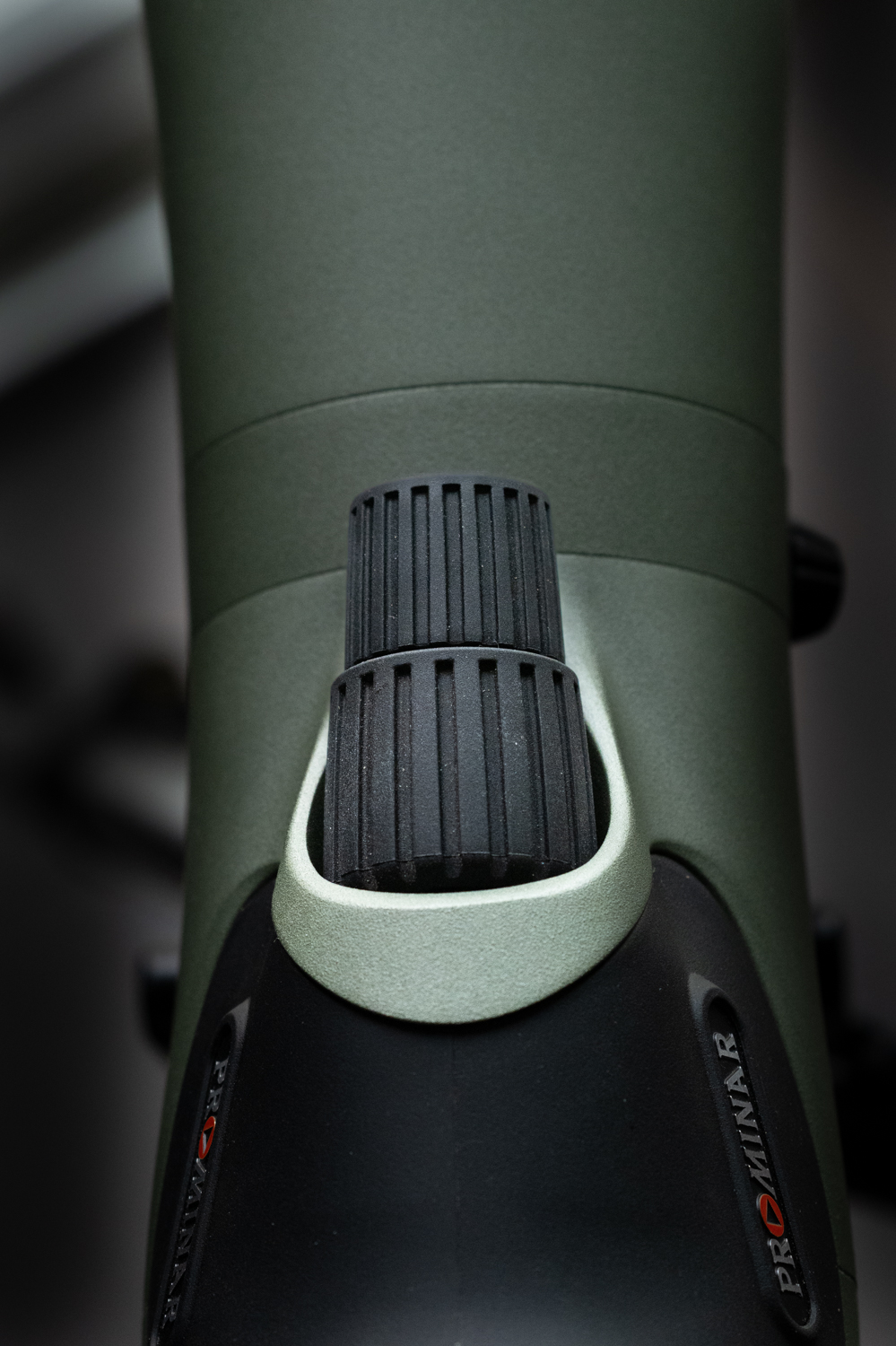
Optical Performance
My expectations for the Prominar 66A were high. My experience with the Prominar 883 and TE-11WZ wide zoom eyepiece is overwhelmingly positive. It offers a stunning, clean, wide FOV from the low of 25x all the way up to 60x. There is no weak spot in the big spotter’s performance. I wasn’t surprised the 66A was good, but I didn’t realize just how good it would turn out to be.
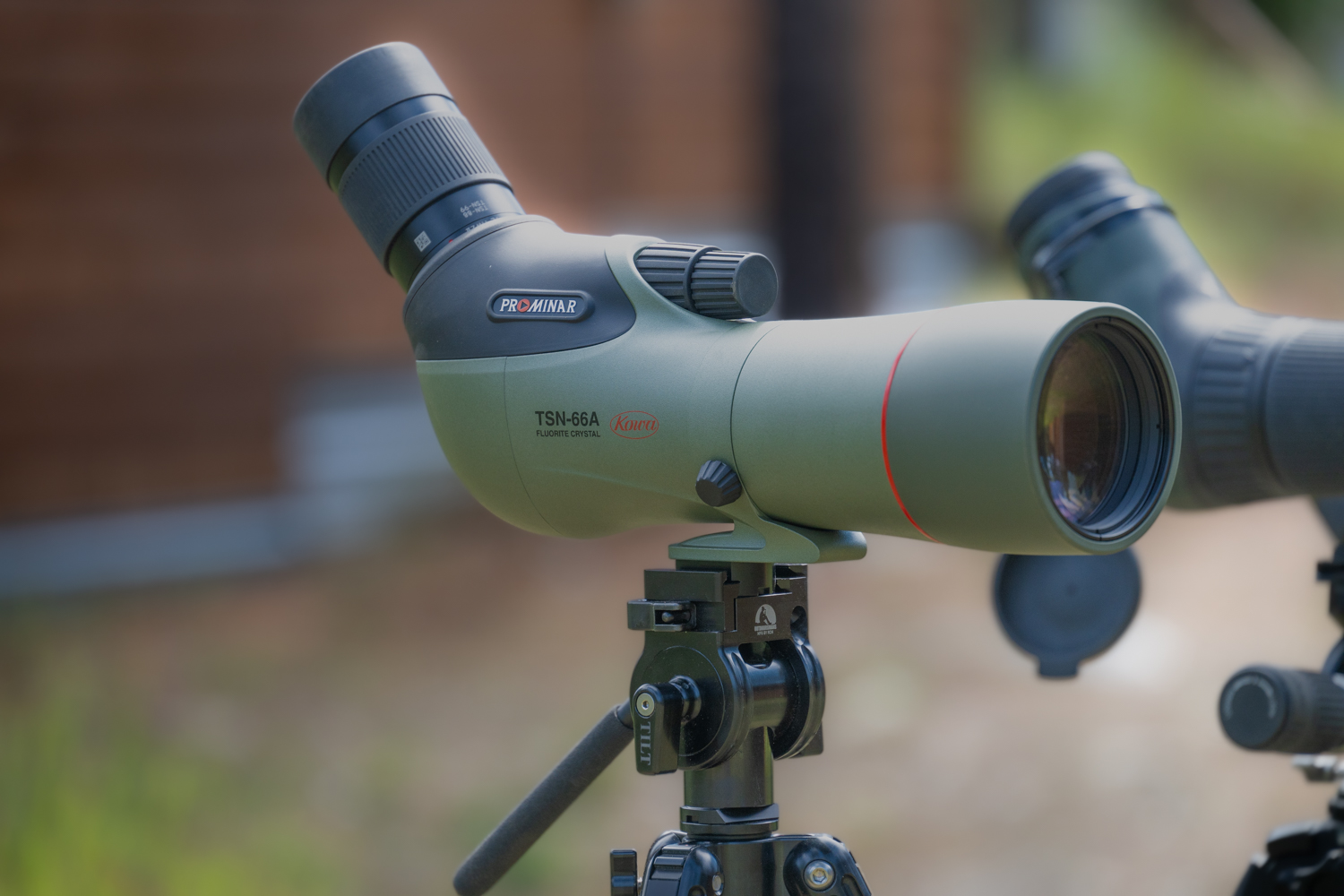
During resolution testing, one thing jumped out right away. Both Kowa scopes just had more contrast in the image. While the Swarovski scopes were plenty sharp and resolved the same element on the close-range resolution chart, they simply didn’t have the pop the Kowa scopes did. It even seemed like the 66A had just a little more contrast than the 883. Very impressive.
In good light at close range, all four scopes resolved the same element on the resolution chart with the increased contrast of the Kowa scopes making them resolve the lines cleaner and easier. The Kowa scopes with the TE-11WZ eyepiece showed little to no color fringing from chromatic aberration. The Swarovski scopes were absent of fringing in the center of the field, but small amounts showed up towards the edges. The ATX, with its wider field of view, shows a little more at the edge than the ATS.
Distortion is extremely well controlled with the TE-11WZ. Straight lines stay mostly straight with just a hint of pincushion distortion. The ATX is very similar, while the 20-60 eyepiece on the ATS shows a little more distortion of the “mustache” variety.
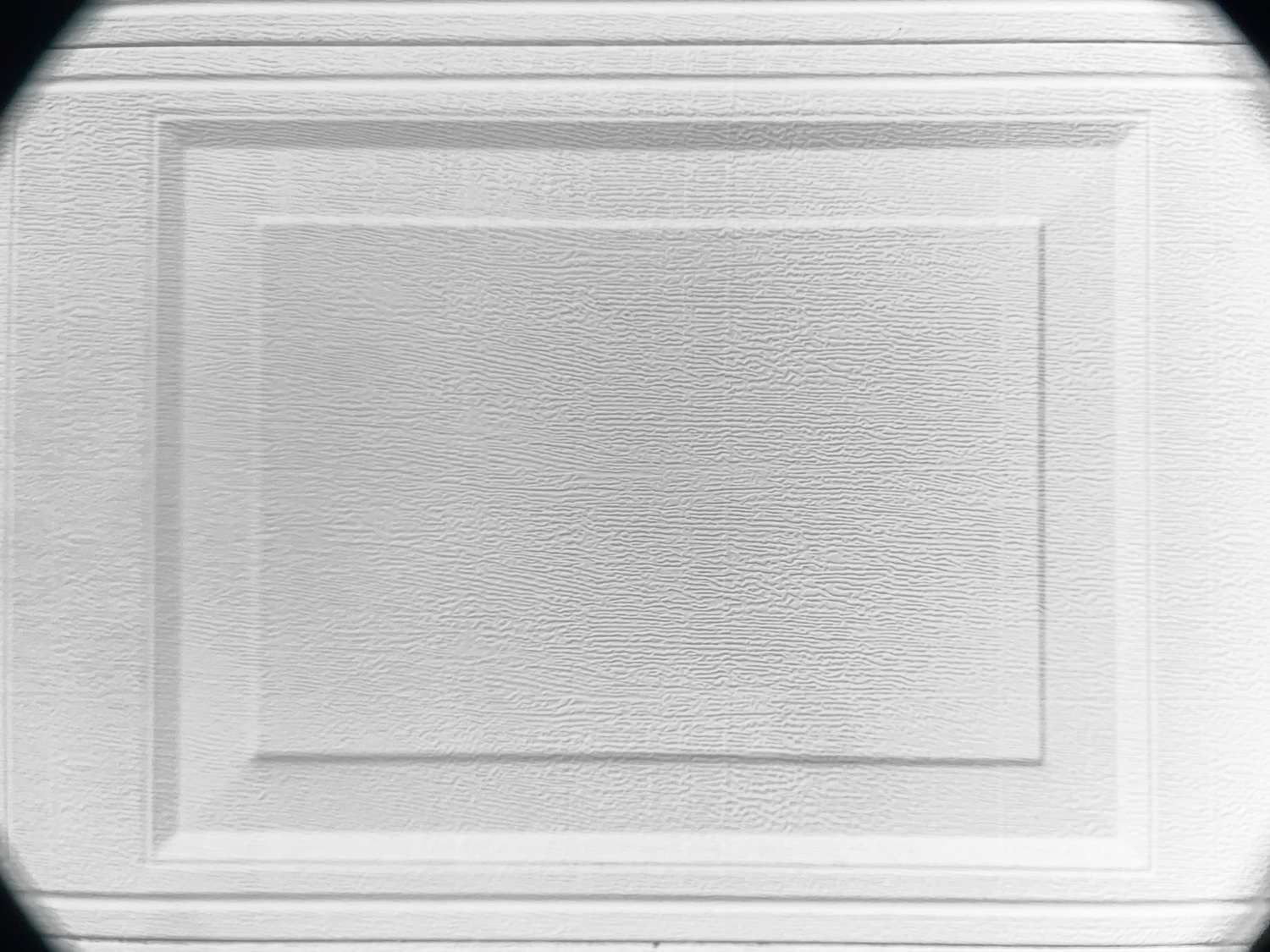
Long-Range Resolution Testing
The long-range resolution testing separated the scopes a little more. With all four scopes on 60x, both Kowa scopes resolved one line smaller than the Swarovski scopes. An atmospheric mirage was present, and the Kowa scopes seemed to “see” through it just a bit better. The contrast advantage was still present but not as noticeable as it was at short range.
In good daylight, I could not see a difference in the image between the Prominar 66A and Prominar 883. I expected the resolution potential of the 88mm objective scope to leave the 65mm scopes in the dust, but the Prominar 66A stayed right with it.
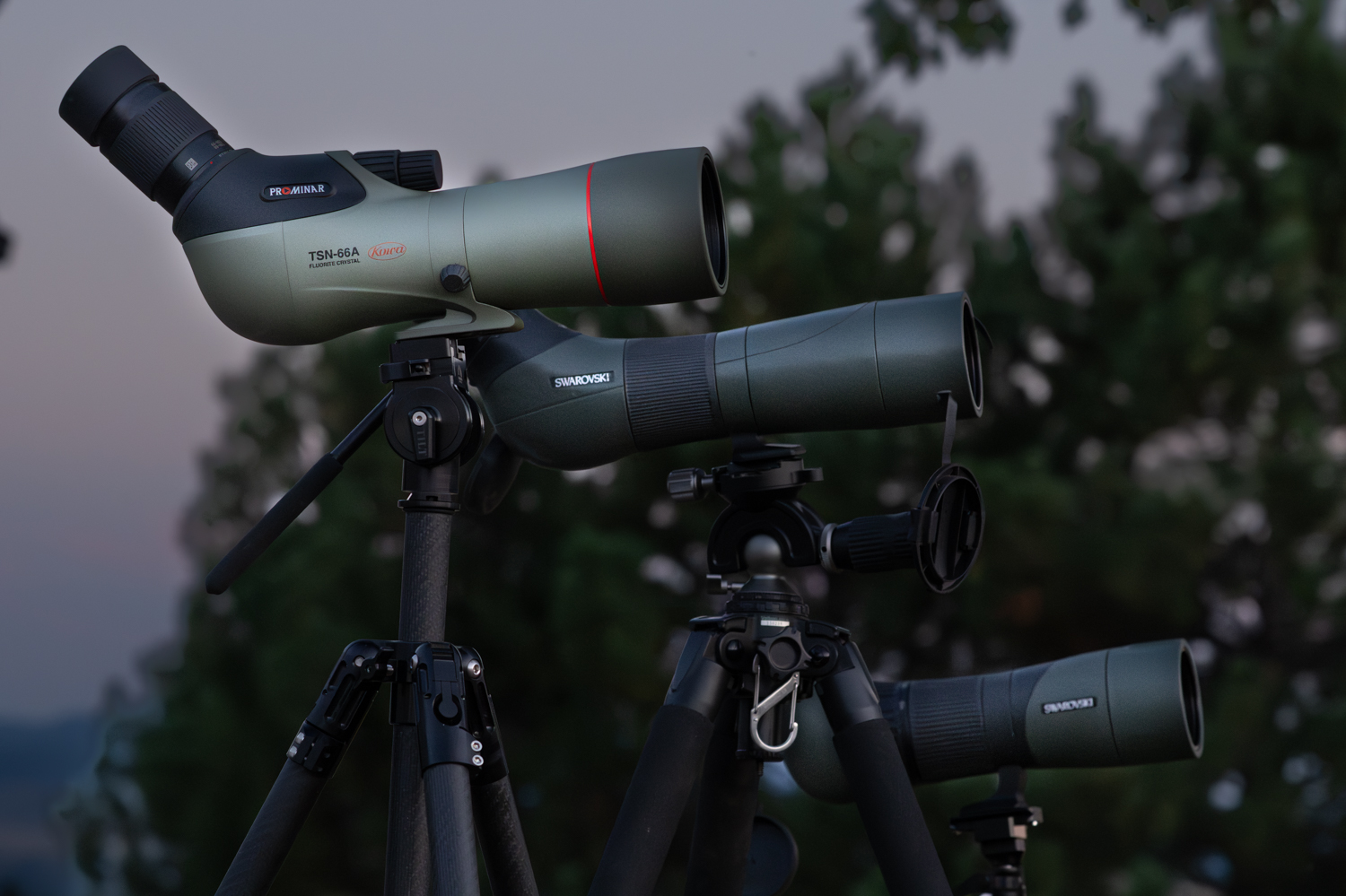
Low light testing finally showed the 88mm’s advantage. As the light waned, I would get just a few minutes more of resolution out of the 88mm versus the smaller scopes, but here again, the Prominar 66A had a surprise left. It easily left the Swarovski scopes as the light faded and hung on to the very last moments against the Prominar 883.
The 1.6x Extender
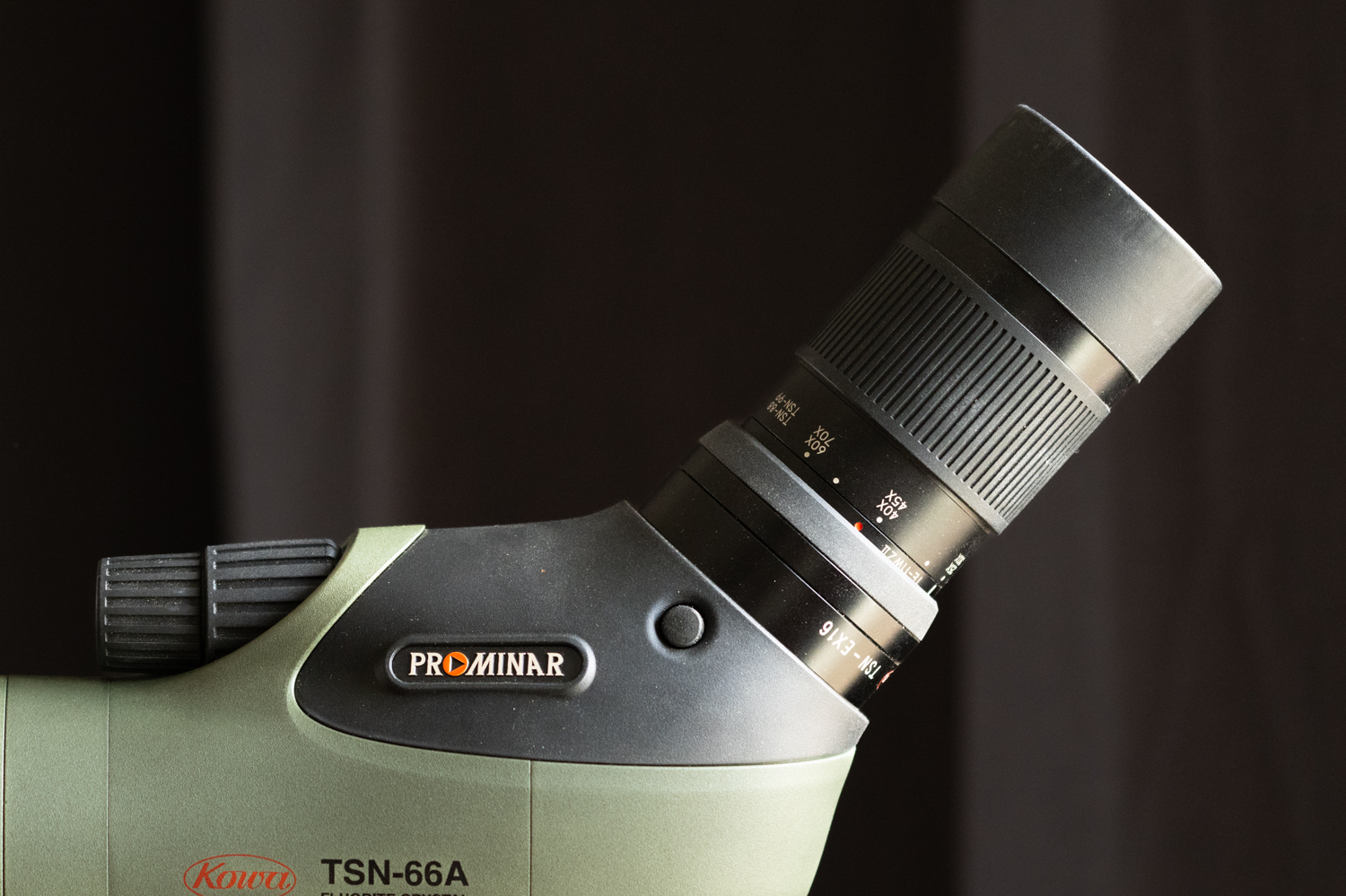
Sadly, the contrast suffered greatly when I mounted the 1.6X extender to both Kowa scopes. The additional magnification did allow me to resolve one smaller element on the chart in bright light conditions at close range. However, at longer range, the extender amplified the mirage too much to be useful. Other issues were focus was harder to achieve, contrast was reduced, and the image darkened considerably. I did find the extender useful when observing Saturn in the night sky one clear evening, but I never even thought about using it during a hunting situation. Add in the hassle of having to mount it to the covered threads by the eyepiece mount, and I think few hunters will find the extender a field-worthy addition to their hunting pant.
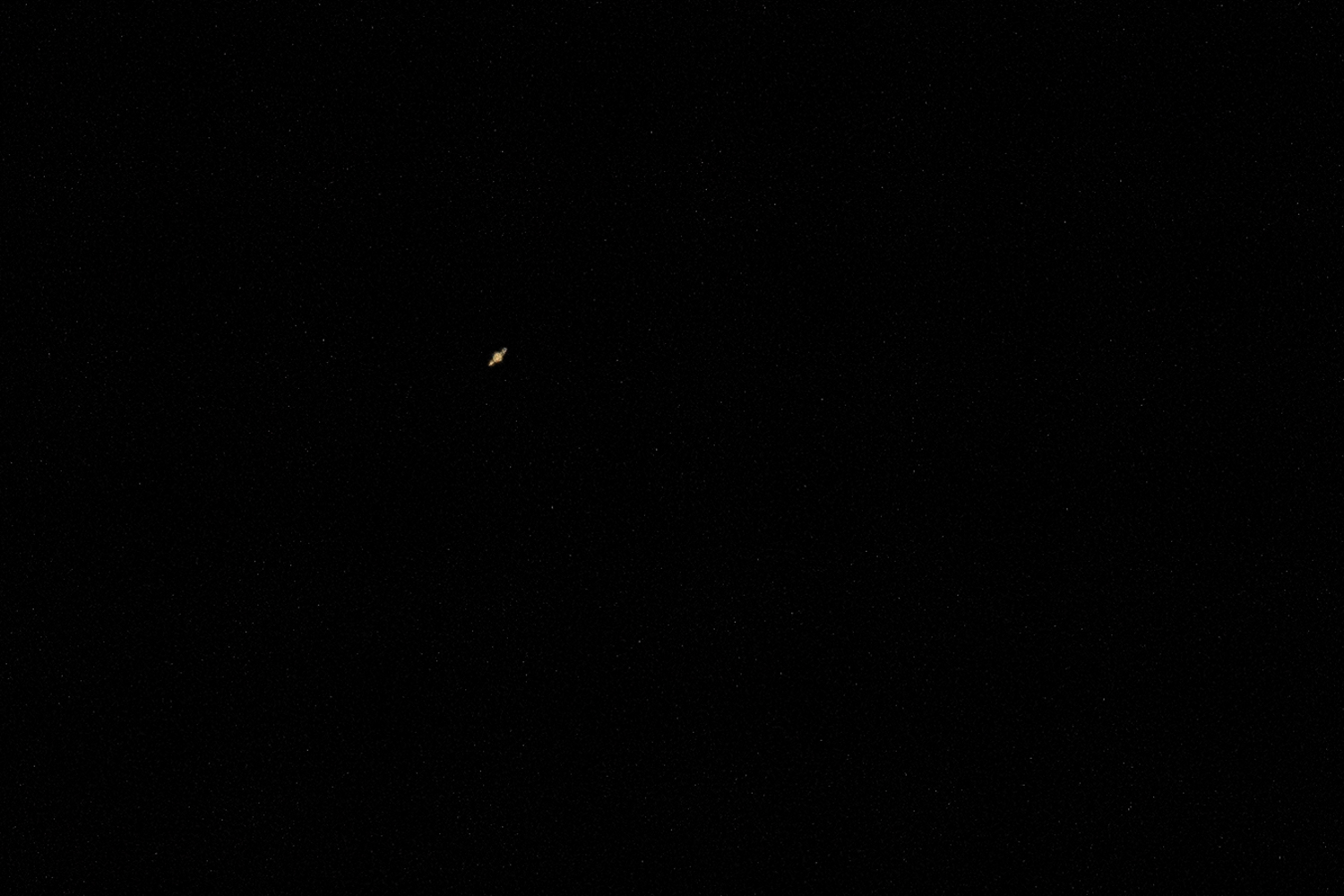
The TE-80XW Eyepiece:
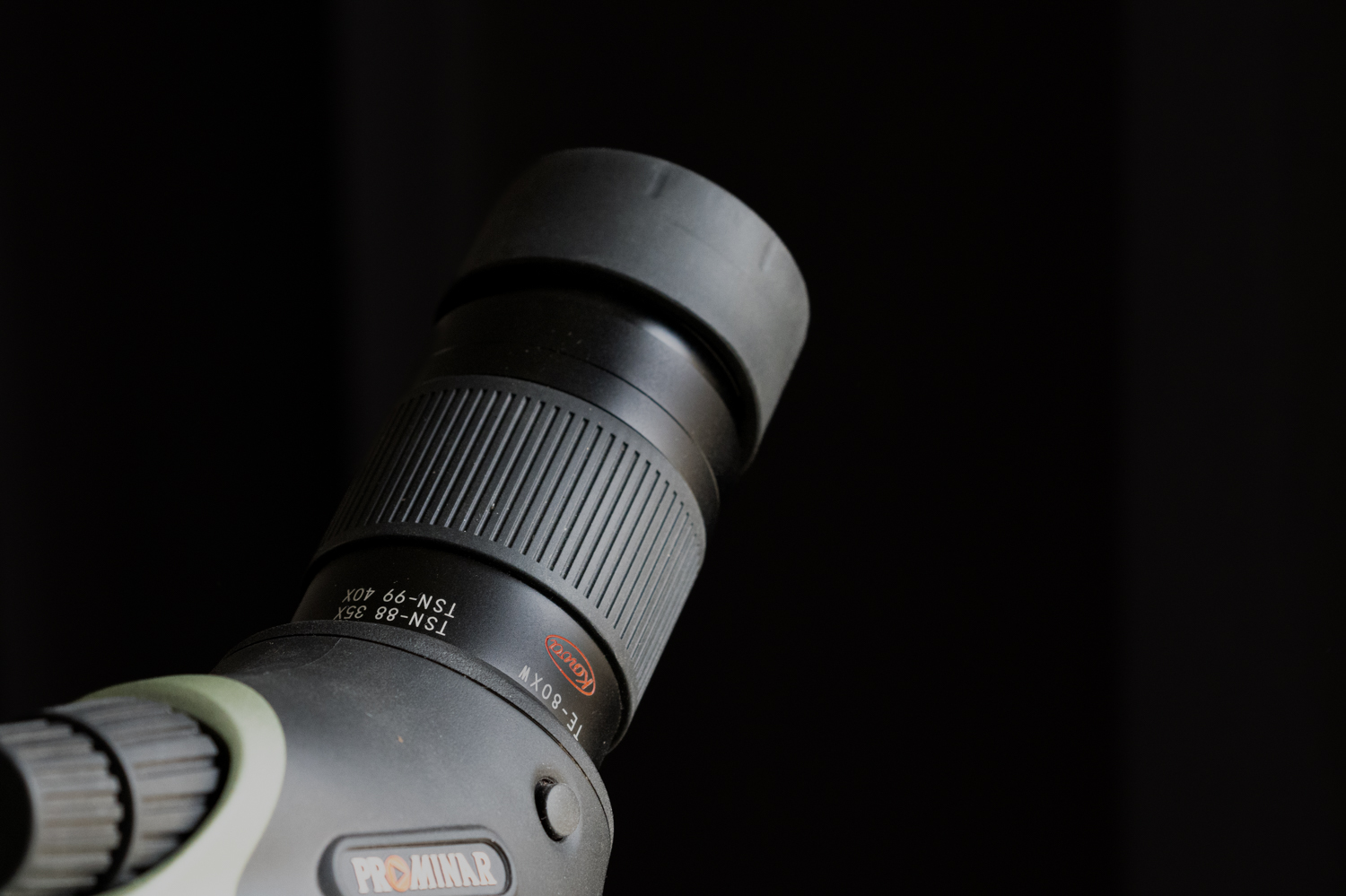
With how great the TE-11WZ zoom eyepiece is for Kowa spotting scopes, I was skeptical the “Extreme Wide” TE-80XW fixed eyepiece would offer any advantage. Resolution was similar to the zoom, but the fixed eyepiece was just stunningly wide. Placing my eye to the eyepiece was like stepping up to a picture window. The wide field of view does allow for a bit of pincushion distortion, and a trace of color fringing starts to show up at the very edge of the massive field. The 35x magnification is a good compromise between low enough for good brightness while still having enough X’s to show detail at long distances.
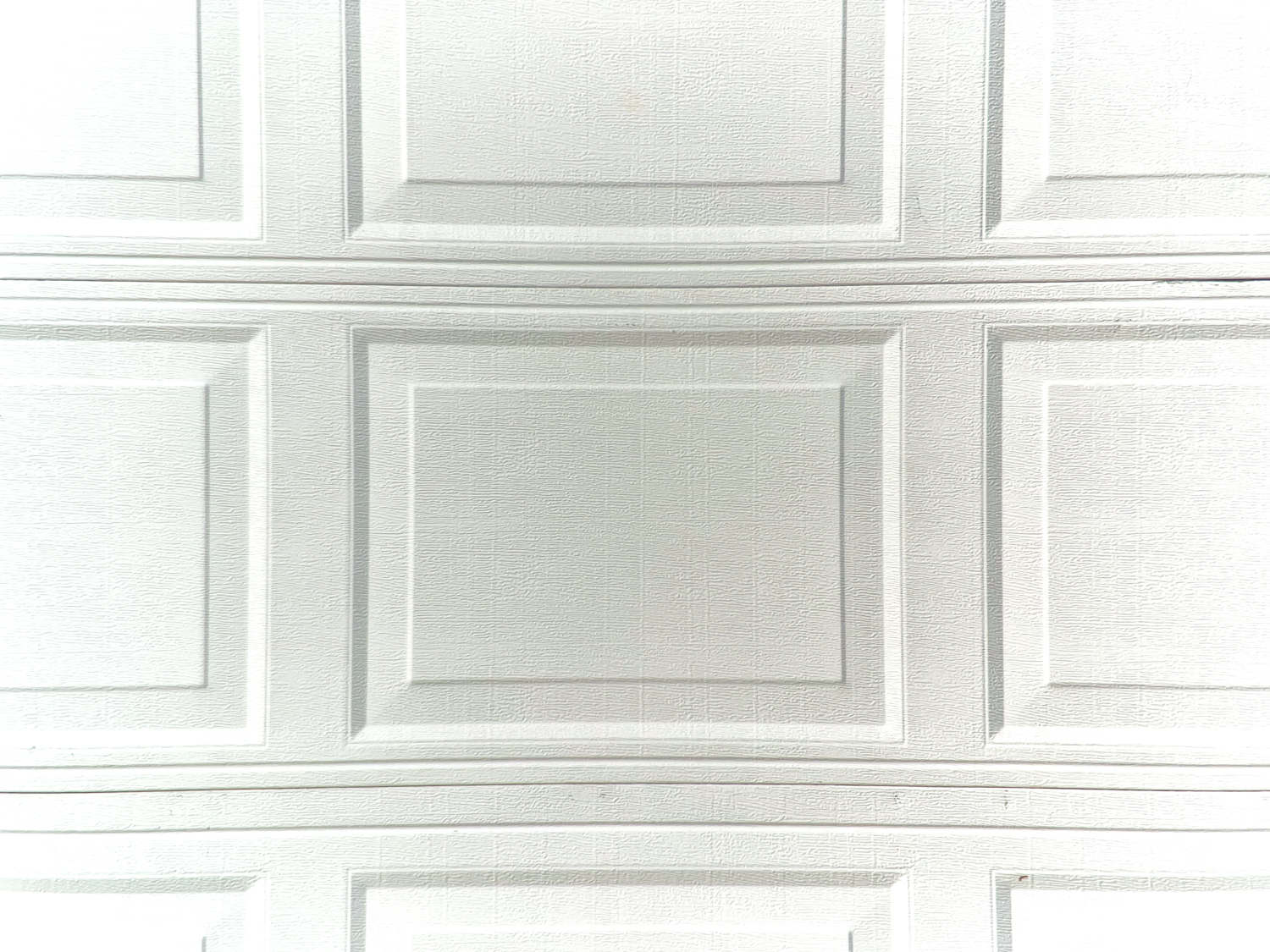
Great For Digiscoping
I used the eyepiece as my only eyepiece for a deer and elk bow hunt in Montana. Although there were times I wanted the zoom’s ability to turn up the magnification, I was pretty surprised just how few times I felt the need. The number one advantage I found with the TE-80XW was in digiscoping. Although the fixed eyepiece is both longer and heavier than the zoom, it is the same diameter, so digiscoping adapters sized to fit the zoom will work interchangeably with the fixed 35x. Using the main 1x camera on my iPhone 13 Pro, the TE-80XW eyepiece showed NO vignetting. That’s right, there’s no need to pinch and zoom. It’s just a clean, sharp, digiscoped image full screen.
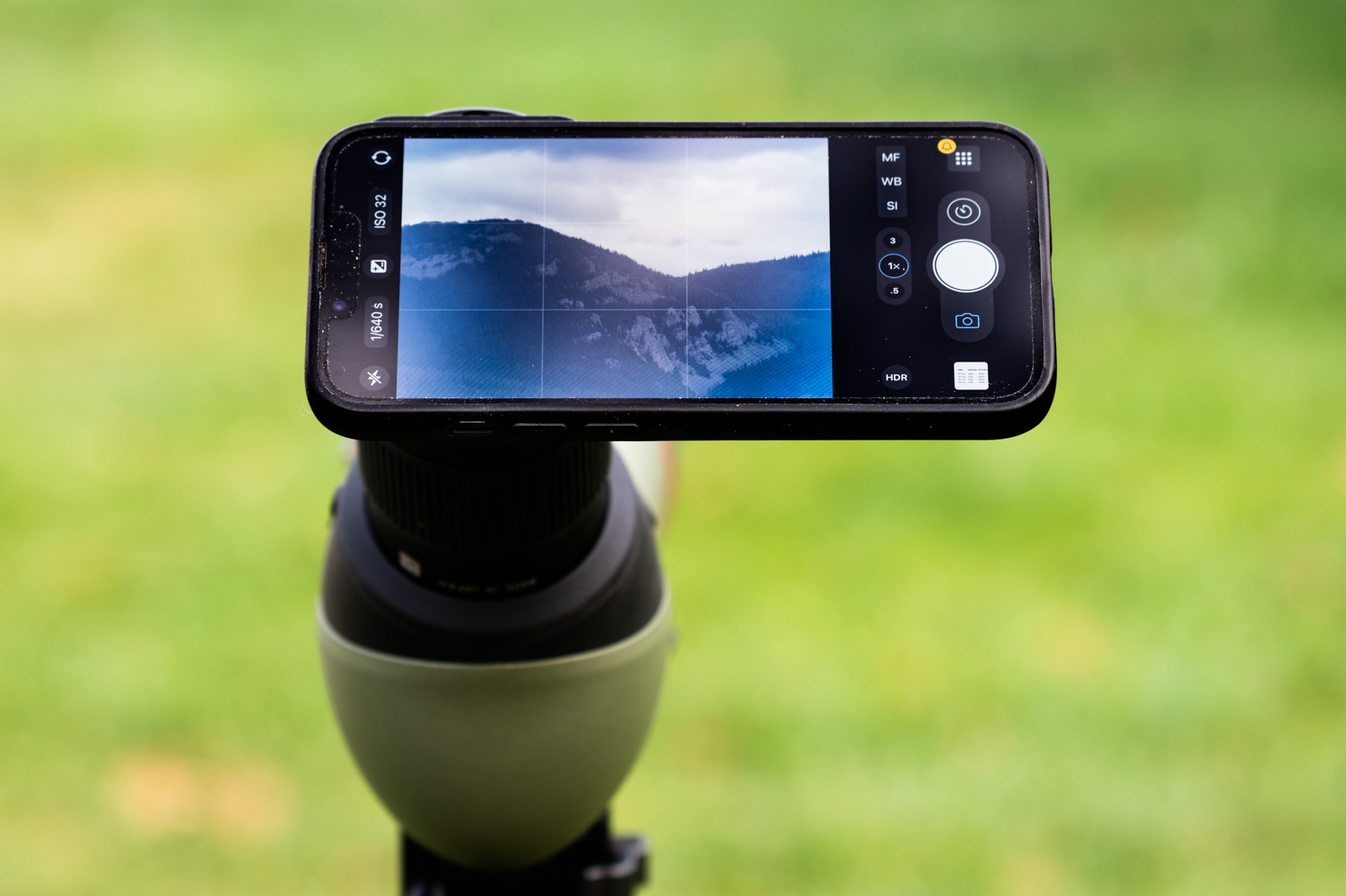
Specification Comparison
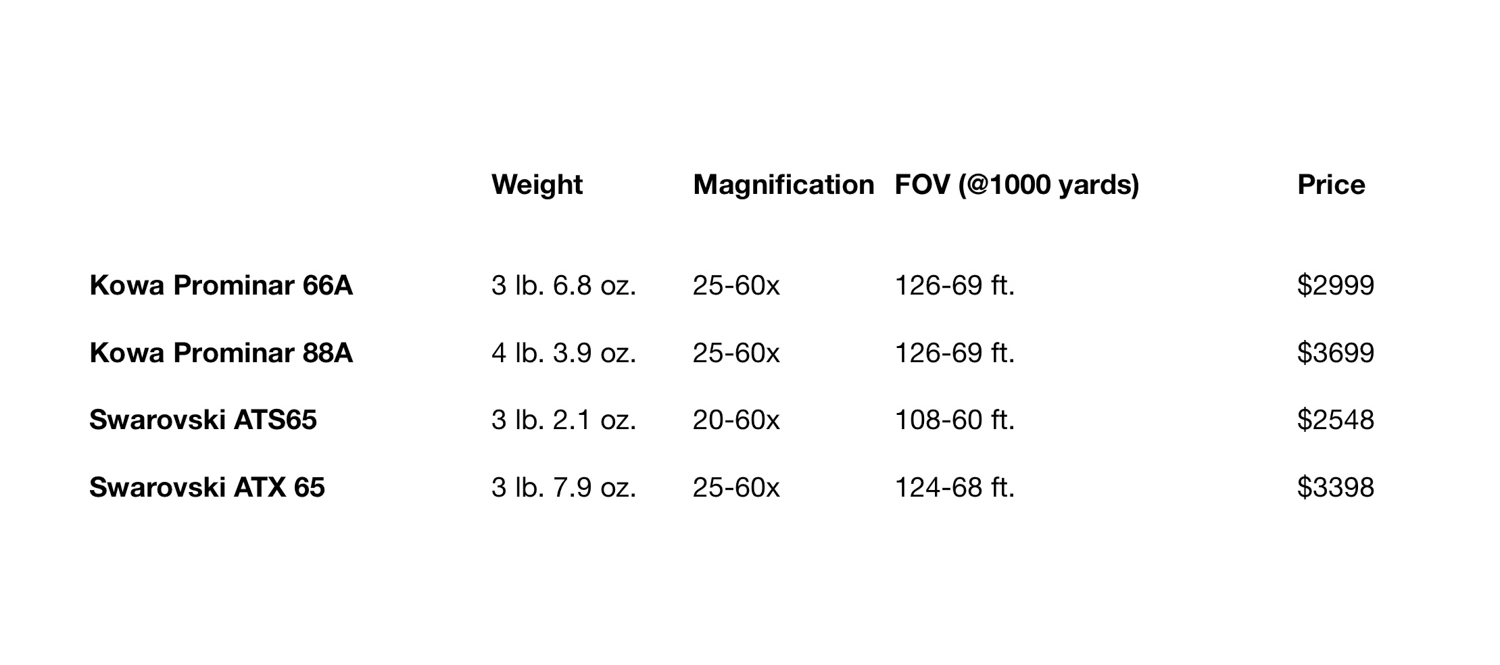
Conclusion
The increased popularity among Western Hunters with Kowa’s top-of-the-line Prominar spotting scopes is well deserved. The new Prominar 66A adds to the appeal providing full size premium spotting scope performance in a smaller and lighter package. The Prominar 66A becomes the optical benchmark in the 65mm class of spotting scopes. The European scopes are still excellent, however, and some hunters may prefer the fully rubber armored and/or helical focusing scopes a better choice for their type of hunting.
Even among current Prominar 88mm owners, the 66A may be a worthwhile swap, given just how remarkably close it is to the 88mm in performance while saving cost and weight. The Prominar 66A pairs well with the versatile and well corrected TE-11WZ 25-60x zoom or the ultrawide TE-80XW 35x fixed eyepiece. Most hunters will find the zoom the best match, but serious digiscopers will be hard pressed to find a better eyepiece than the TE-80XW. Available at Go Hunt.
Comment or ask Matt questions here.
Continue reading our other optics reviews.














